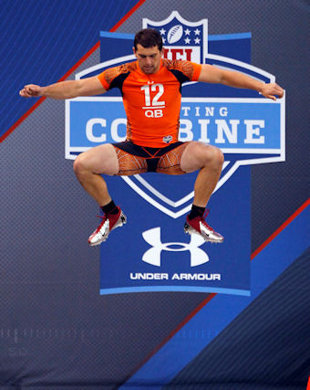Around the sports world, we rightly grow ever more aware of and concerned with concussions. More information is becoming available about the potentially devastating side effects of head trauma like chronic traumatic encephalopathy, more commonly known as CTE. This condition is being linked to the premature deaths of several well-known players like Junior Seau, although the exact link between CTE and these deaths is not entirely known.
Football sees the majority of the attention and rightly so. However, especially at the youth level, head injury awareness is on the rise including in sports like soccer and basketball. One sport that needs to evolve in its concussion prevention is baseball.
Admittedly, for the most part, baseball has done an admirable job in this, even at a young age. For instance, according to a study published in the American Journal of Sports Medicine, baseball players only accounted for 1.5% of an estimated 500,000 concussions suffered by high school students under the age of 19. This is obviously great. Helmets have been a required part of the batting process for as long as most of us can remember.
However, there is one area that almost all levels of baseball ignore: the pitcher. As we see progressing athletic ability across all sports at all levels, pitchers are throwing harder earlier. At the same time, batters are hitting the ball back also more rapidly. The act of pitching a ball at maximum velocity often leaves pitchers in a position not ready for defense. While the ideal is taught that a pitcher should come out of the windup in a position ready to field, this simply is not the case.
The ball being hit right back at the pitcher is relatively rare. In fact, when a pitcher makes a quick reaction and makes a play on a comebacker, there is a good chance the play makes the SportsCenter Top 10. It is even rarer when the ball comes right back at a pitcher’s head. However, when it does, the results can be catastrophic.
Of course, the most recent reminder is the Cincinnati Reds’ pitcher Aroldis Chapman, known for hurling the league’s fastest pitch on record at 105.1 miles per hour. In a Spring Training game, a game that mattered little to a player certain to make the roster, Chapman took a comebacker directly to the face. Surgery was required and the picture of Chapman with literally dozens of staples in his skull is unsettling, to say the least. The scary part is this: Chapman was lucky.
That’s right. Chapman was lucky. He suffered a mild concussion and some fracturing. He will start the season on the DL. And he’s exceptionally lucky. It wouldn’t be the first time that a line drive to the head would kill a member of baseball team. Infamously, Mike Coolbaugh was killed in 2007 as a first base coach when a line drive hit him in the neck. Some say that had the ball hit somewhere else in Chapman’s head, the injury could have altered or ended his career.
It doesn’t take hurling 100 mph fastballs to put a baseball player in mortal danger. Just 11 years ago, in 2003, 18 year old Brandon Patch, a pitcher, was killed in an American Legion game when struck by a line drive. Even when the consequences are not fatal, there is huge danger for these baseball players.
Sports Illustrated recently profiled Jimmy Silk. Silk was the unfortunate victim of a comebacker right off the area around the left ear. Although it was initially unsure, Silk survived a risky surgery but not without consequences. He had to relearn how to speak. He remains deaf in the left ear. He missed a full year of school.
These stories are no longer uncommon. And, again, as players get bigger, faster and stronger, they likely won’t be for a long time. At least, until baseball, at all levels, provides pitchers with some kind of protection. Major League Baseball has done it for base coaches. They’ve approved, on paper, head protection for pitchers although it has yet to be seen.
These steps simply are not enough. It is mandatory, at all levels, to wear a helmet when batting. The same needs to happen for pitchers. Certainly, it is a protection on every pitch for something that happens relatively rarely. Nonetheless, the minor inconvenience of protecting a pitcher’s head could prevent the next gruesome on field injury. Or worse…
Add The Sports Daily to your Google News Feed!
